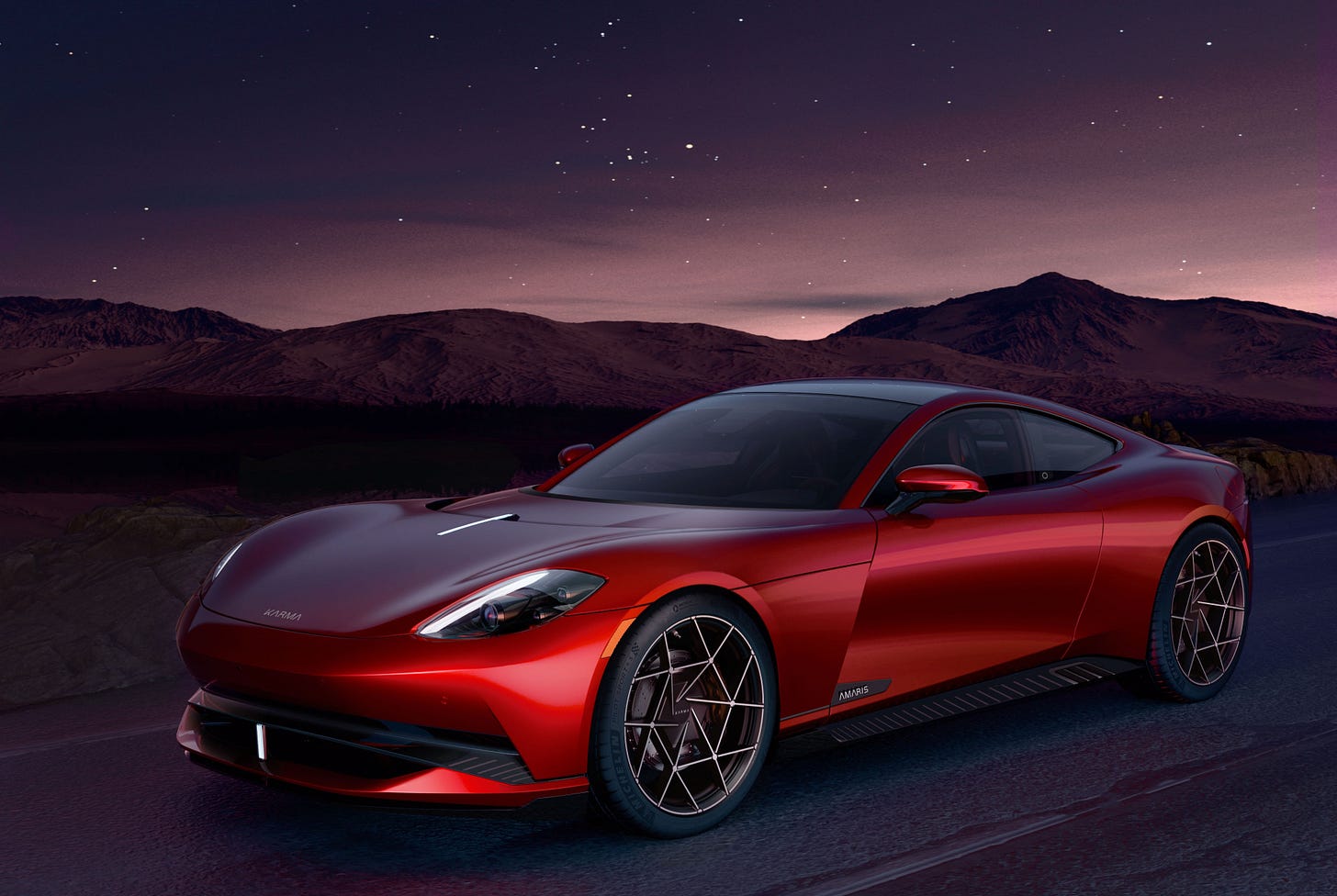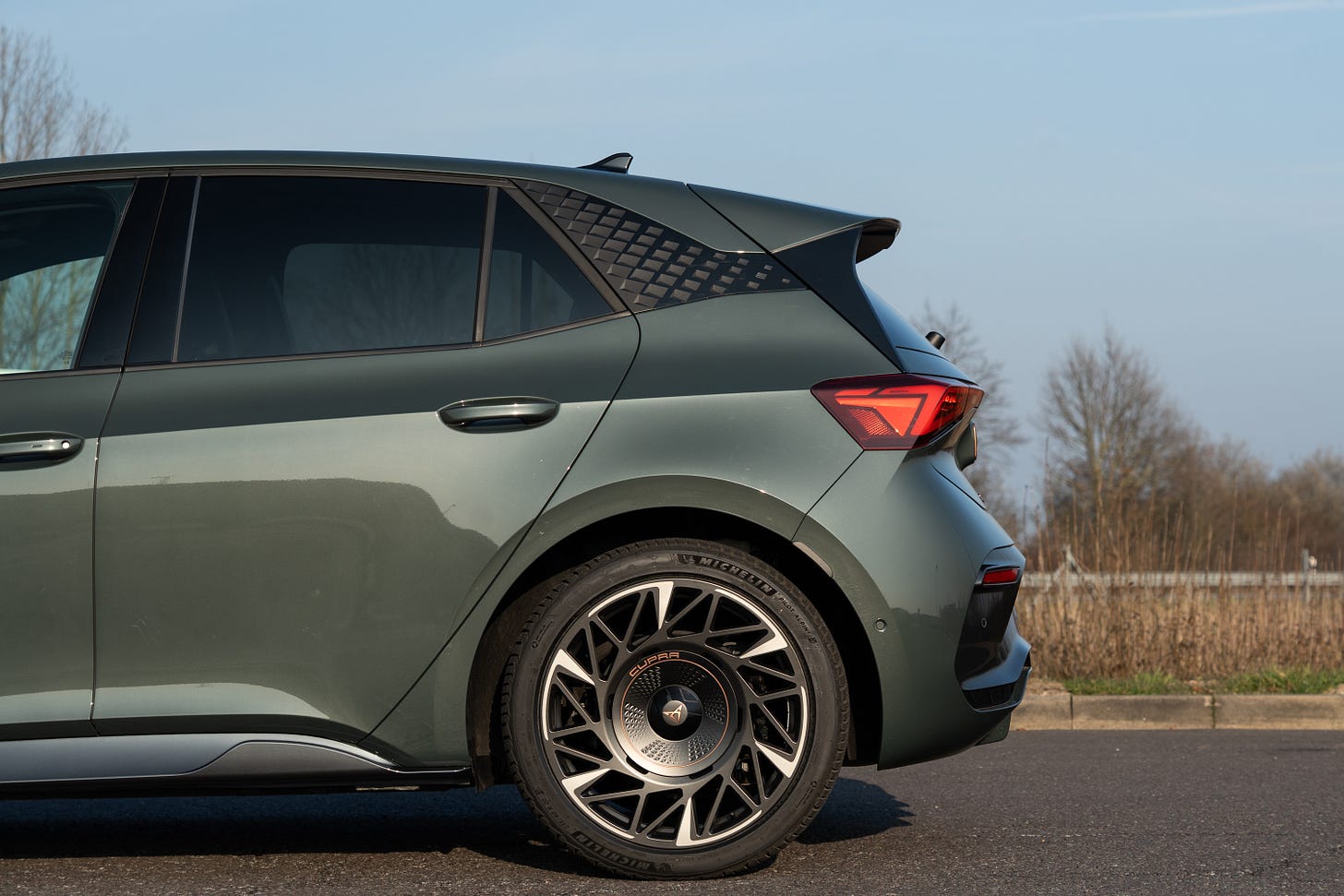For Karma Automotive, it's back to the future with series hybrids
Plus, a taste of Cupras to come.
Hello, dear readers. Writing this from home with a puppy on my lap, which makes working with a laptop a little extra complicated. If this week's update has a few more typos than usual, please apportion the blame to his little nose.
I spent much of the week down in Texas filming with Capital One's Auto Navigator, which included getting a little extra airtime courtesy of a Ford Ranger Raptor.
Full video on that to come. Until then, here's what hit the web this week.
From early adopter to fast-follower
If Karma Automotive doesn't earn your attention for the stunning designs of its cars -- well, car anyway -- it most certainly should earn a little respect for its staying power. Rising from the ashes of Fisker Automotive's failure 12 years ago, the brand was an early adopter of the series hybrid approach to adding an onboard generator to create an EV with the practicality of a gasoline-powered car.
Early adopter, but I wouldn't exactly call the company an EREV trendsetter. The onboard generator never exactly offered the kind of style and performance required to keep up with that sultry exterior. The esteemed Frank Markus over at MotorTrend called it "rough, unrefined, thrashy."
You can see why the company was keen to ditch that concept. Indeed, the last round of concepts from Fisker was full of fully electrified machines with power output measured in four digits. No more: This week, Fisker unveiled a new concept, the Amaris, and confirmed a re-do on the formerly unveiled Gyesera. That car, the Revero replacement, was at one point going to be an EV but will now stay the course with an onboard generator layout.
The company's first EV will now be the Kaveya, which has been pushed back to 2027. Karma President Marcus McCammon told me I shouldn't consider that a delay. He paints this as a refocusing on the company's core competencies and following market trends. That's fair, given the EREV hype at the moment, but the proof will, of course, be in the powertrain, and the promise now is a new onboard generator that's not only more powerful but better sounding, too. McCammon told me about big, evocative side-pipe exhausts, which might be a bit much for a little four-cylinder, but I can't wait to see and hear it this summer.
Until then, you can read all about it at The Verge.
Could Cupra be America's coolest car brand?
SEAT-spinoff Cupra is one of the newer and hotter brands in the European market, and its parent Volkswagen Group is pledging that we'll be seeing the funky-shaped and fun-driving machines here in America by the end of the decade. Mind you, that pledge was made before a certain administration spun up a trade war to end all trade wars, but it's still officially the plan.
So, to get a taste of Cupras to come, I headed to Germany and got myself behind the wheel of two of the company's EVs: the Born and the Tavascan. I can't say as I found their names particularly endearing, but I loved just about everything else. They're fun to drive and stellar to admire, particularly the Born, with its mini-turbofan wheels.
I truly hope they find their way to my local roads, because they're fresh and exactly what we need more of in the American EV scene.
That's all for this week. In a few days I'm off to drive Audi's reinvigorated RS E-Tron, which should be a proper barnstormer, followed up by a visit to a little startup I can't talk about yet, and then a go in the upcoming hybrid Subaru Forester, which in my book is among the most significant car launches of the year.
Until then, I'm going to shut this Lenovo down and give my full lap and attention to my pup, who's been unusually patient waiting for me to stop typing and start petting.






